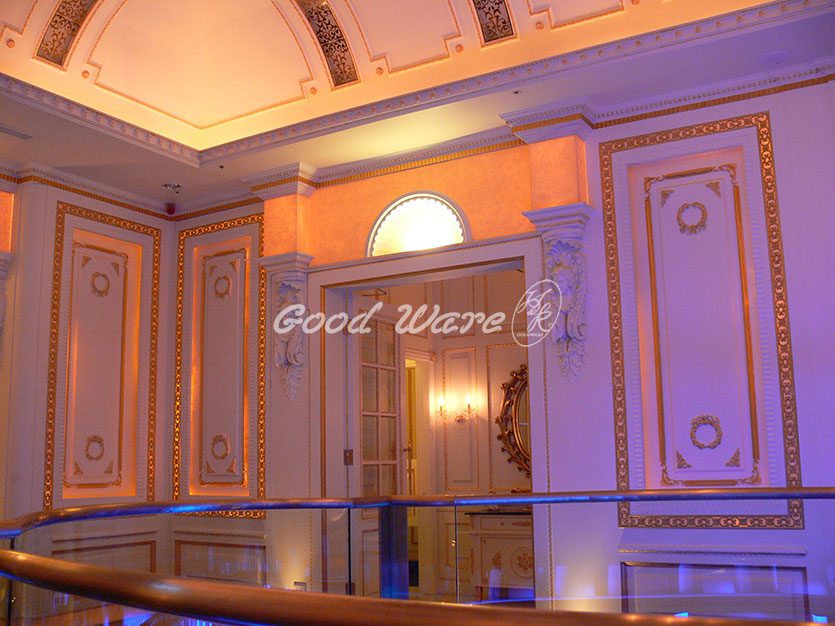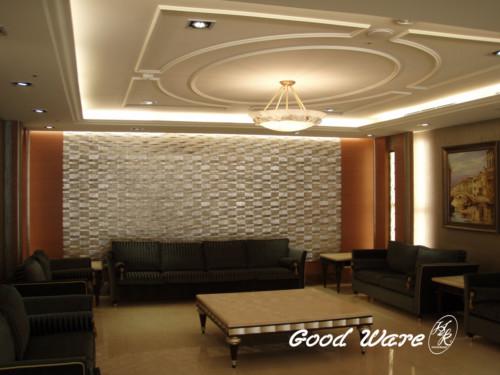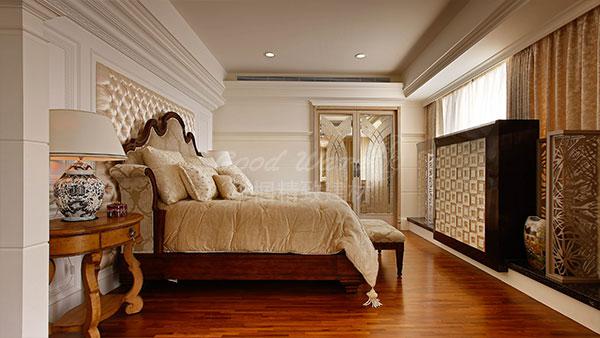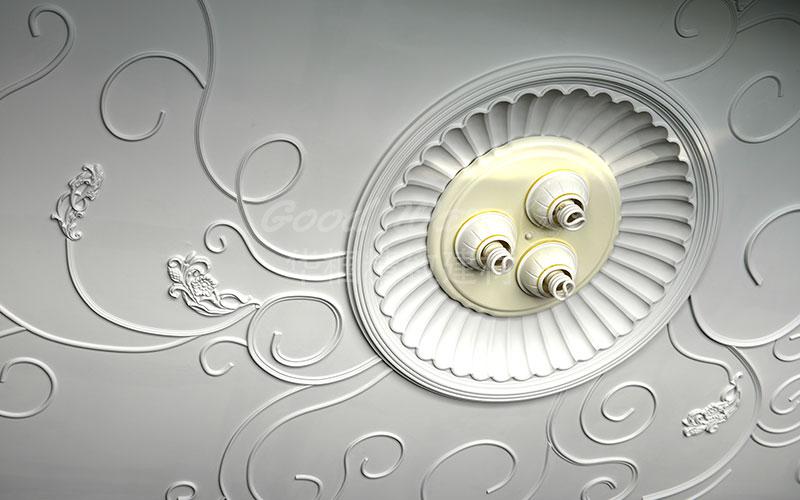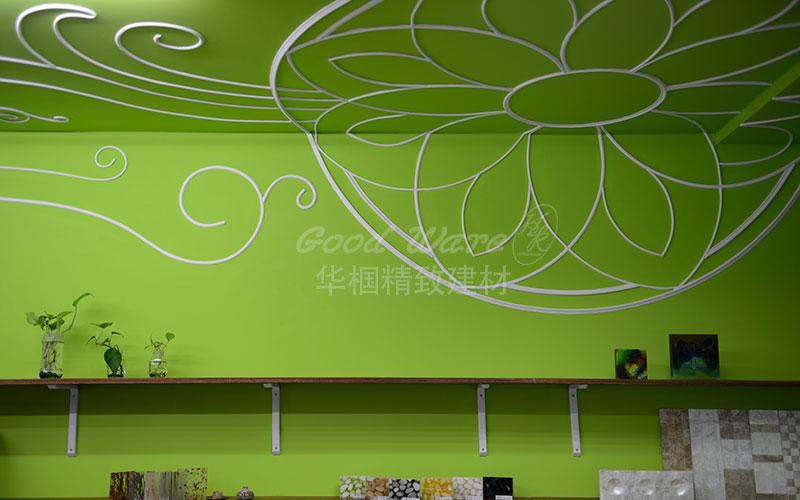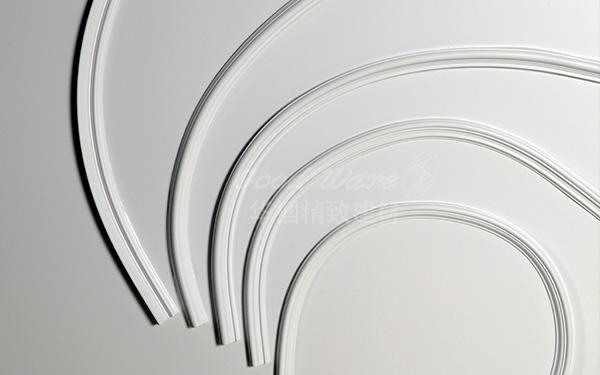Pierced molding, in architecture, furniture, and decorative objects, a surface or group of surfaces of projecting or receding contours. A pierced molding may serve as a defining element, terminating a unit or an entire composition (e.g., in the cap of a column or the crowning cornice of a building) or establishing a boundary or transition between portions of a design.

Modern Pierced Molding
One of the primary considerations in the design of a pierced molding is the type of shadow it will cast. The shape of a molding is termed its profile or section. Pierced moldings formed an important part of most past styles; in Babylonia, Assyria, and Persia, however, their place was taken by flat ceramic enrichment in color. In Egypt, moldings were limited to the cove or Canaletto, and the half round, or torus, which, used together, formed the cornices for the walls of temple or pylon. Moldings were an essential feature of Greek orders and buildings.

The Greek profiles from the basic pierced molding vocabulary for classic types such as the fillet and the fascia, flat vertical surfaces; the Volvo, of an egg-like convex outline; the bead and the torus, both convex, three-fourths of a circle and one-half, respectively; the Canaletto, a quarter circle, and the scout, of elliptical curvature, both concave; and the Cyrano react and the Cyrano reverie, both of compound curvature, being half concave and half convex. The Volvo was carved with the alternating egg and dart; the acanthus leaf and the anthem were used for the Cyrano react, or gel, and the water leaf for the Cyrano reverie. Roman designers, substituting simple segments of circles for the elliptical and parabolic curvatures, never attained the beauty of Greek forms, although in ornament they added numberless innovations.
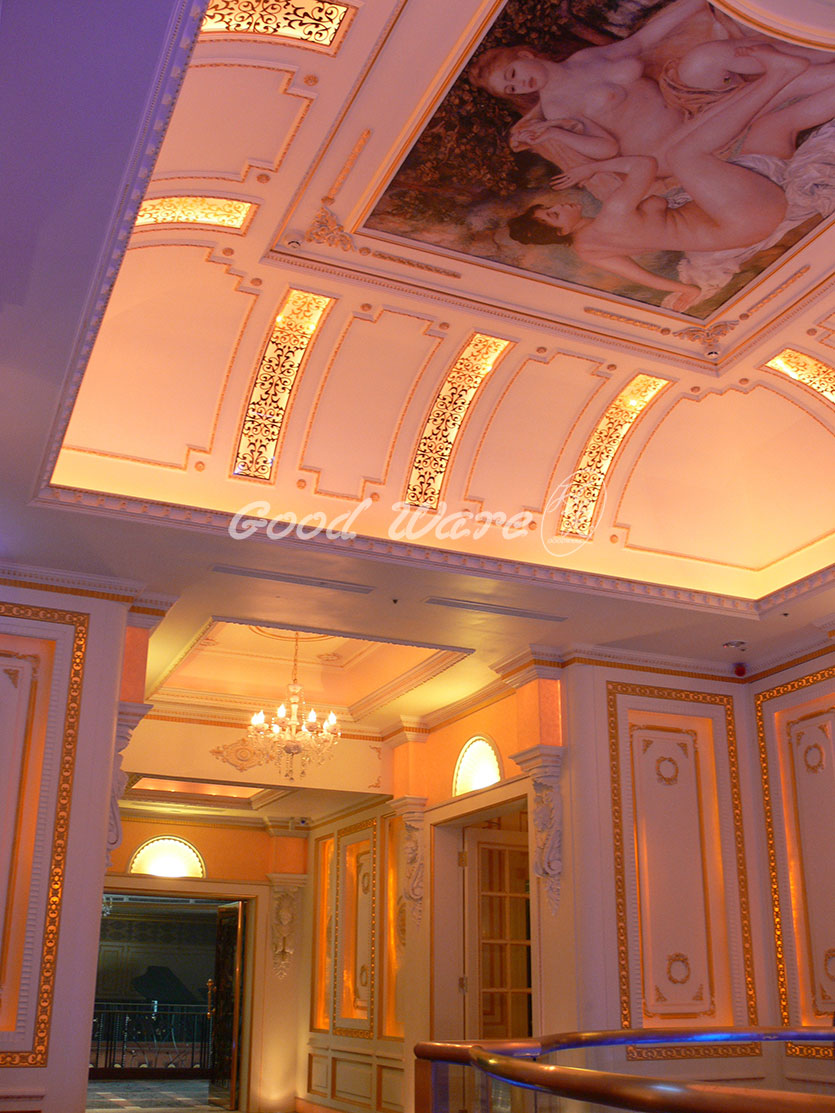
Modern Pierced Molding
In Byzantine architecture the tendency was to flatten the classic outlines, transforming them into bands of pierced enrichment. Romanesque pierced moldings were chiefly simple segments of a circle, as in the especially characteristic bolted, or three-quarter round. Moldings changed with the development of Gothic architecture. Cornices, jambs, archivist, and capitals show a richly varied interplay between projecting rounds and deep concavities. In the late Gothic (15th cent.) of France and Germany, there were ingenious combinations of differing elements to produce broken, merging, and interpenetrating moldings. In developed Gothic, a rich assortment of naturalistic forms appeared, e.g., flowers and intertwining vines. The Renaissance return to purely Roman forms was followed in the baroque by heavier, projecting moldings, which cast dramatic shadows. Later a wide variety of styles was employed, but since the 19th cent., decorative pierced molding has been little used in modern architecture.
